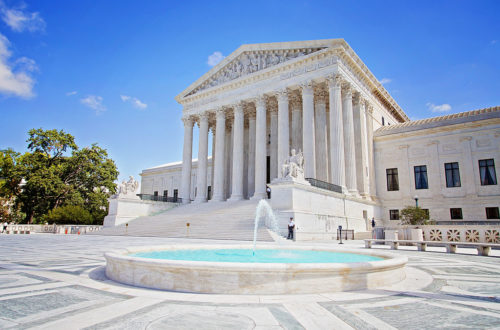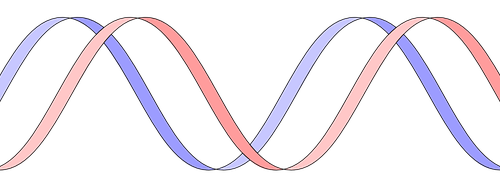The new 4th Amendment of the Chinese Patent Law came into effect on June 1, 2021. Right before that date, the Chinese Patent Office (“CNIPA”) released some “Interim Measures” to give us a taste of what was to come, though they have yet to released the actual Implementation Rules. Two months later, CNIPA finally released Draft Patent Examination Guidelines in conjunction with the new Patent Law.
We have provided a summary of the key points at this link, and for the next several posts, we will explore some of those topics in greater detail.
“PTA” in the Patent Law
Patent term compensation for patent office delay, which we will refer to as “patent term adjustment” (PTA) in this article, was newly added in the Fourth Amendment of the Chinese Patent Law (2020).
Art. 42.2 of the new Patent Law says:
Where an invention patent application is granted after four years from the date of filing and after three years from the date of requesting for substantive examination, the Patent Administration Department under the State Council shall, upon a request of the patentee, award a compensation on the term of patent for unreasonable delay in the examination of the invention patent, but the compensation on patent term shall not apply to any unreasonable delay caused by the applicant.
In other words, if the patent office takes more than four years to examine and grant a patent (including 3 years from the examination request date), the patentee will receive patent term compensation for the “unreasonably delay”.
Proposed Examination Guidelines
The proposed Patent Examination Guidelines (“Guidelines”) recently issued by CNIPA provide additional details, and are summarized below:
Can you get PTA for both a UM and Invention Patent Filed on the Same Day?
No. If an applicant filed an invention application and a utility model (UM) application for the same invention on the same day, and the UM application has been granted, PTA shall not be granted to the invention application[1].
Is PTA automatically granted?
No, in addition to pay an official fee, an applicant must file a request for PTA within 3 months before the grant date.
How do you Calculate PTA compensation time?
Compensation time is counted in days, and takes the total number of days of delay caused by the CNIPA and subtracts any delay caused by the applicant.
| Actual number of days of delay | = | unreasonable delay in days during prosecution | _ | unreasonable delay in days caused by the applicant |
What delays from CNIPA actions do not count toward “delay caused by CNIPA?”
Suspension procedures, preservation measures, administrative litigation procedures, and reexamination procedures.
How do you define the Filing Date and the Date of Requesting for Substantive Examination?
The Filing Date is defined based on the type of application filed:
|
Type of Application |
Definition of Filing Date for PTA calculation |
|
Normal CN application |
The date CNIPA receives the filing documents |
|
Chinese national phase application via PCT routine (PCT-CN application) | |
|
Divisional application |
The submission date of the divisional application |
The date of Requesting for Substantive Examination is the issue date of a Notice of Entering Examination Stage.
What delays will not be counted as part of “unreasonable delay in days during prosecution”?
- Taking Extensions in a Reply
If the applicant does not respond to an official notification before a designated deadline, the period from the designated deadline to the submission date of a response will not be counted. - Deferred Examination
If the applicant applies for deferred examination, the deferred period will not be counted. - Incorporation
The delay caused by incorporation as indicated in the Rule 45 and 46.1 of the Implementing Regulations of the Patent Law (the regulations) will not be counted. - Request for Restoration of Rights
The delay caused by a request for restoration of right(s). The period from the original expiry date to the issue date of a Notice approving the restoration will not be counted, unless it can be proven that the delay was caused by CNIPA; and - Early National Phase Entry
For a PCT-CN application filed before the “30-month deadline” (30 months from the priority date), if an early-process request has not been filed, such period from the entering date to the 30 month deadline will not be counted.
Our Thoughts
Same-Date Filing Strategy
If the proposed Guidelines are approved, certain previously used China-specific filing strategies may not be as attractive as they once were. For example, under the old law, applicants could adopt a same-date filing strategy (i.e., filing an invention application and a UM application for the same invention on the same day). This strategy allowed applicants to obtain a granted UM patent quickly (within months) while taking more time to prosecute the corresponding invention patent. When the invention patent eventually granted, the applicant would give up rights to the UM patent in exchange for the 20-year term invention patent.
This strategy worked well for inventions that could take advantage of this approach. However, recent Seminal Case Examples issued by the Supreme Court and these proposed Guidelines suggest that this strategy may not be suitable for certain patentees. Now, a UM grants means that the corresponding invention patent’s examination becomes automatically deferred, thus delaying its the grant. This has the overall effect of reducing the overall years of the invention patent’s enforceable patent term. Furthermore, any invention patent that uses this strategy will not be able to enjoy any patent term adjustment. As such, applicants must carefully consider and weigh all these different factors while determining the best Chinese patent filing strategy.
Unclear Issues
It was indicated that delay caused by “incorporation” as indicated in Rule 45 and 46.1 of the Regulations is considered “unreasonable delay caused by the applicant” and will be detrimental to any PTA consideration. Since the Regulations have not issued yet, we do not know exactly what this term means. We will keep an eye out for those details.
General Thoughts
Overall we find these Examination Guidelines to be reasonable, and the newly provided information certainly helps applicants plan for the future. We hope that PTA can be granted automatically instead of only upon request. We have provided such feedback to CNIPA and hope that they will consider such feedback before finalizing these Guidelines.
About the Authors

Yolanda Wang is a Principal, Chinese Patent Attorney, and Chinese Patent Litigator at Eagle IP, a Boutique Patent Firm with offices in Hong Kong, Shenzhen, and Macau.

Jennifer Che, J.D. is Vice President and Principal at Eagle IP, a Boutique Patent Firm with offices in Hong Kong, Shenzhen, and Macau.

Pauli Wong is a Chinese Patent Attorney at Eagle IP, a Boutique Patent Firm with offices in Hong Kong, Shenzhen, and Macau.
This article is for general informational purposes only and should not be considered legal advice or a legal opinion on a specific set of facts.
For more details about filing invention and UM applications on the same date, please refer to our previous article. ↑





